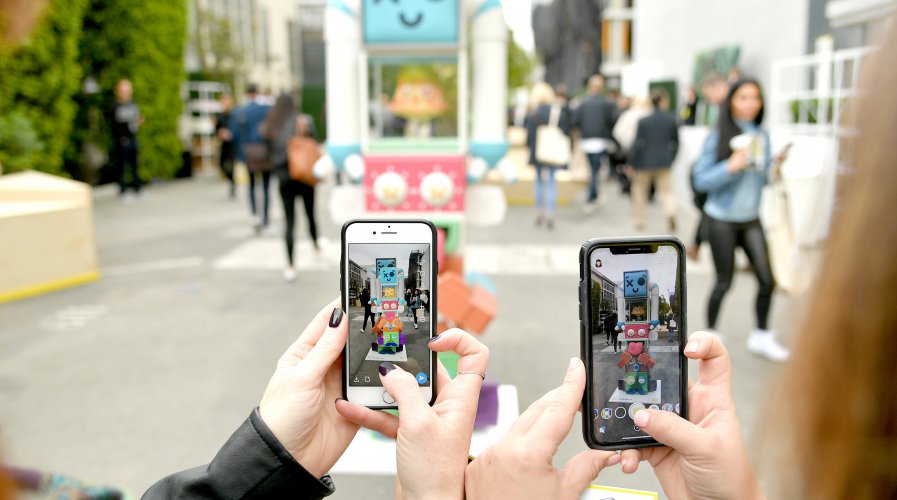
Augmented reality payment systems can help humans limit contact during the pandemic. Source: AFP
We need contactless payment options right now – AR could make them fun
Social distancing measures affect so many things we take for granted day-to-day. Customer-facing operations or essential businesses are adapting to the situation by virtualizing as many business applications as they can in an effort to limit physical contact.
Of course, it also affects the bare bones of commerce: how money changes hands.
In order to avoid risk of transmitting the virus, retailers are actively encouraging a shift away from cash in favor of cards, e-payment, mobile wallet, QR codes or digital banking solutions. Or, in other words, contactless is now key.
Given the current climate and restrictions, digital payment methods have never been more instrumental to help protect both, customers and business operators. So efforts from both parties must be mobilized to contribute to the cause.
Customers are urged to adopt cashless payment means in order to accommodate these changing circumstances and reduce contact when they are in stores or dealing with last-mile delivery workers.
However, when it comes to this virus – one that has been confirmed to have the ability to remain on surfaces for up to days – reducing contact alone is not enough.
Payments should, therefore, be completely contactless. In such a scenario, augmented reality (AR) capabilities can definitely rise to the occasion.
Empowering a truly contactless experience
The technology has been gaining grounds in the financial industry for a while now. Some banks have leveraged the solution to help customers locate the nearest branch and review budgets before making a purchase.
Snapchat, for one, has recently tapped into AR technology to host donation capabilities on its application.
With an aim to support COVID-19 relief efforts, the social media turns to visual enhancing technologies to revolutionize donation payment systems. The organization has managed to make donating fun, interactive and visually informative with AR and image-recognition capabilities.
The application will be promoting stories related to COVID-19 developments and whenever users decide to donate, they can simply swipe up the screen which leads them to the donation page.
Users can then, simply scan their cash notes using the application’s camera system which has been set to identify 23 currencies. An AR-conjured visualization will then pop up showing users how their money will help the World Health Organization (WHO) in its fight against the pandemic.
Once users are satisfied with the information provided to them and they agree to finalize their donation, they will be lead to another page where payment details can be submitted.
The experience will also be available for sharing if users wish to encourage others in doing the same. Snapchat revealed that the capabilities are available to users across 33 selected countries.
The difference that AR offers from other digital payment solutions is the empowerment in making financial decisions. Users will be able to have a visually immersive journey before they finalize a purchase which would result in smarter spending habits and most importantly, a contactless shopping experience.
AR also completely removes the need for customers to visit a premise to make a purchase as businesses can also host their virtual stores using the technology.
Without the need to touch and risks human interactions, customers can test products and review them just as they would in a physical store.
In short, until authorities are clear on how the pandemic can be stopped and when it will be completely safe again to socialize and interact, businesses need to innovate their means of operating especially when it comes to payment.
If AR is a fit for the operation and hosting the capabilities is possible, the businesses should definitely go for it.
READ MORE
- Ethical AI: The renewed importance of safeguarding data and customer privacy in Generative AI applications
- How Japan balances AI-driven opportunities with cybersecurity needs
- Deploying SASE: Benchmarking your approach
- Insurance everywhere all at once: the digital transformation of the APAC insurance industry
- Google parent Alphabet eyes HubSpot: A potential acquisition shaping the future of CRM


